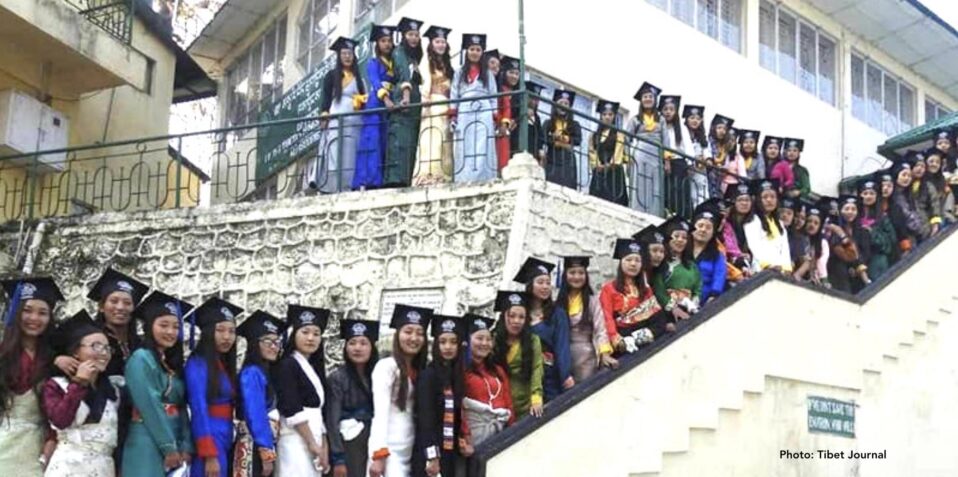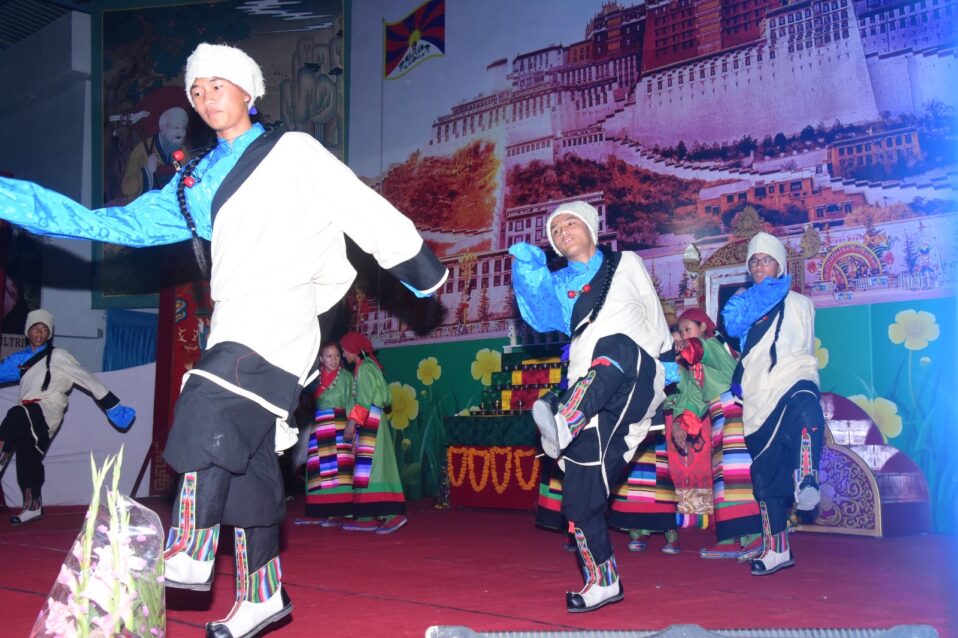BACKGROUND INFORMATION
TCEF believes that the endangered Tibetan culture premised on compassion and altruism is precious, not only for Tibetans but also for the whole world. We think it is vital to transmit it to the children.
We also believe that Tibetan children and youth in exile are disadvantaged by birth, that as stateless children, they struggle with identity and face emotional problems. We believe that helping them learn about their roots and culture will provide them a sense of identity, belonging, and emotional balance.
Before starting on a project to help transmit the culture to the children, it was vital to study and see what resources are already in place. Here is an overview of what we found out:
1.Efforts by Tibetan Educators in exile to transmit culture to the children
a) In the early nineties, the medium of instruction in Tibetan schools in exile changed from English to Tibetan. The Education Development and Research (EDRC) wing of TCV and the publication wing of the Department of Education (DOE) brought out textbooks in Tibetan. The EDRC also established and runs a teacher training program that trains Tibetan teachers to teach with Tibetan as the medium of instruction.
b) Tibetan Dance, Music, and Drama Programs are a part of the curriculum of all Tibetan schools in exile. The Tibetan Institute of Performing Arts (TIPA), helps to train teachers in this subject.
c) A Tibetan religious instructor is part of most residential Tibetan schools.
d) Apart from textbooks mentioned earlier, the publication wing of DOE has brought out several children’s magazines in Tibetan. Magazines like Phayul and Gangjong have been relatively popular with Tibetan children. More recently, they also have added some animation children’s stories.
2.The Himalayan Digital Library and other ‘Tibetan’ web sites
There are scores of ‘Tibet’ related web sites. Many of these are from Dharma Centers established all over the globe. Then there are commercial web sites whose aim is to sell Tibetan artifacts like Tibetan thangkas or Tibetan rugs, ritual objects, etc. As a learning resource, The Himalayan Digital Library developed by the University of Virginia provides much information on many aspects of Tibetan art and culture. Another resource for Tibetan culture is the Library of Tibetan Works and Archives at Dharamsala, India. While both have remarkable collections and are great learning resources, they are academic and scholarly, and not the resources for young Tibetan children.
3.North American Tibetan Community Cultural Needs Assessment Project,2002
We also studied the findings and recommendations of the above project undertaken by the Conservancy for Tibetan Art and Culture (CTAC). Its findings echoed what we know to be true – that Tibetan children in Diaspora here in America are losing their cultural values, that they are facing an identity crisis, and that these are resulting in behavioral problems not common in Tibetan cultures. CTAC recommendations included introducing Tibetan language classes, cultural art classes, inviting Tibetan religious teachers, tradition bearers and Tibetan specialists, holding summer camps for Tibetan children, creating study programs for Tibetan children to study in Tibetan communities in India and Nepal, establishing community centers, temples/shrines and a national center for Tibetan arts and culture.
There are two critical takeaways from the information above:
1.That Tibetans know how important it is to try and preserve their culture and to pass it to their children. Over the years, they have undertaken several steps to help this transmission, as mentioned in the above paragraphs.
2.The efforts do not include a collection of simple, fun, and relatable videos on Tibetan culture. In fact, in today’s world, where the internet is full of videos, if you are a Tibetan parent, searching for something fun and informative about Tibet and its culture for your children, you would be disappointed. Videos are the current trend, and it seems vital to use this medium.
GOALS:
- To provide Tibetan children in Diaspora a fun and interesting way to learn about their culture.
- To raise awareness of Tibetan culture and eternal Tibetan values here in the West by providing the global community easy and exciting tools to learn about Tibetans and their culture.
METHODS
The project can be implemented in four main stages, as follows:
Stage 1. Selecting Essential Understanding topics and doing research
TCEF will use all our connections with Tibetans and Tibetan organizations to choose a list of Tibetan culture topics that we feel Tibetan youth might be interested in. This list does not need to be complete or perfect. Later, we can open the conversation to wider Tibetan audiences and add or delete topics depending on the feedback. In this way, we can ensure that the topics are organic, alive, and attractive to our audience.
While interest will be an important consideration, we will also weigh the topics to see if they are a core part of the culture we want to transmit. In other words, in selecting the topics, we will also factor in the Essential Understandings of Tibetan culture, making sure that we transmit all that is truly valuable and remarkable.
Stage 2. Filming and creating videos
In collaboration with partners and with the cooperation of Tibetans in exile, we will start filming short, three to five-minute videos on the selected topics. In creating the videos, we will be clear about who our target audiences are. They are the Tibetan youth-in our schools and institutions in exile in India, Nepal, and Bhutan, the Tibetan youth in Diaspora in Europe, America, Australia and New Zealand, and in any other area in the world. It is also for Tibetan youth back home in our mother country.
When we review content, when we discuss the visuals associated with our content, we will always remember who are target audiences are. Making every video fun, exciting, and engaging to the Tibetan youth is paramount. Having that correct mix of accurate content and an engaging presentation will be a priority throughout the production of the videos.
Stage 3. Creating a website to collect all content
As the videos are made, we will make it as easy as possible for everyone to access them. This includes sharing them on Youtube and other platforms. We will also create a web site that will specifically host the collection of videos, and we have already bought the domain www.TibetChild.com. As the collection increases, we will categorize content and also make topics easily searchable.
Stage 4. Producing more learning tools
Finally, since we have done the leg work and have all the content, we will edit, categorize and create learning videos on key Tibetan culture topics like The Festivals of Tibet or The Sacred Arts of Tibet, etc. These will be learning resources that we might be able to market or provide gratis to Tibetan institutions and any other interested institution here in the USA or even globally.
Our best hope is that the videos will have an immediate good impact on Tibetan children and Tibetan homes. If we succeed in making fun and engaging videos, we are confident they will be received well. In the long-term, we know that this project has not only the potential to help transmit our culture to the children, but also to teach it to all others.
One of the fundamental beliefs behind this project is that transmitting the culture to the children will provide them a sense of identity and a sense of belonging that they can be proud of. It can help Tibetan children in Diaspora find some balance, which in turn can translate to better behavior and becoming happy and useful members of the community.
We cannot overstate the mental and emotional problems of stateless persons, especially young children. It is almost as if they are without their roots, trying unsuccessfully to copy lifestyles and grasp onto the cultures of their host countries.
The Conservancy for Tibetan Art & Culture with support from the Rockefeller Foundation had done a North American Tibetan Community Cultural Needs Assessment in 2002. We are quoting a segment of its findings that support our observations:
“A myriad of social and emotional issues facing Tibetan youth and their families have emerged from the experience of Diaspora. A number of parents expressed deep concern about patterns of problem behavior and delinquency among a growing number of Tibetan youth since moving to North America. This seemed to be a phenomenon in particular among boys in the communities. These problems included not observing parental boundaries, challenging parental authority, violence, gang involvement, substance abuse, school truancy and dropping out of school. Parents in the U.S. attributed many of these problems to an open American society with too many freedoms, which many parents believe are being exploited by their children to break traditional family and cultural patterns and expectations.”
Viewed from this lens of behavioral problems arising from culture loss and displacement, we think this project to help transmit the culture to the children can have a good and lasting impact on the lives of thousands of Tibetan children and youth in Diaspora.





